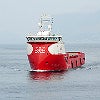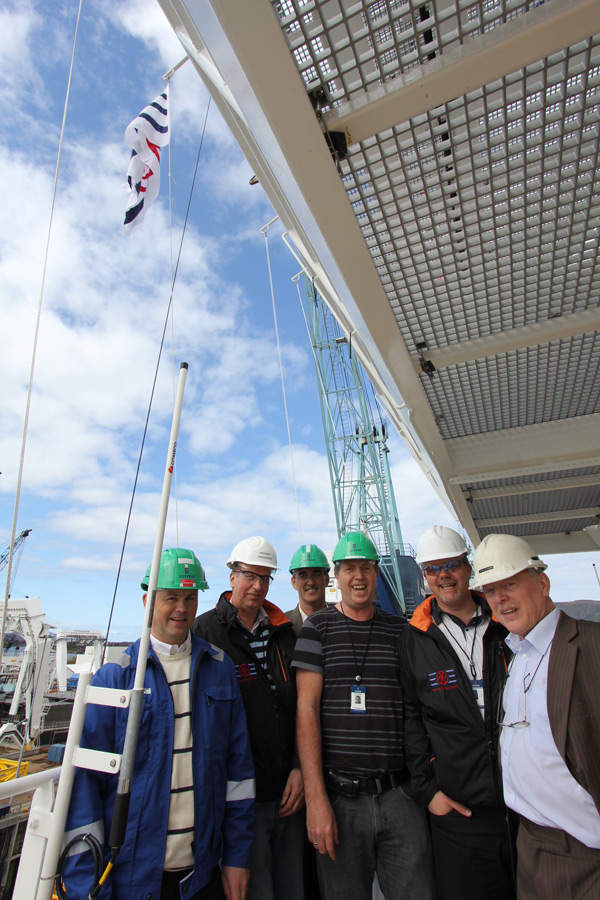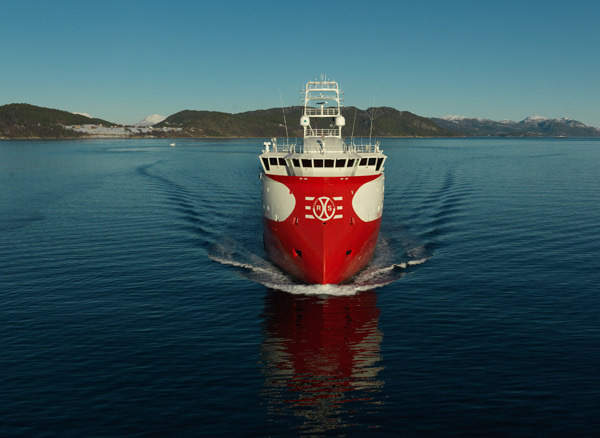
Rem Mist is a large platform supply vessel (PSV) built by the Norwegian shipbuilder Ulstein Verft for Remøy Shipping, a ship management company of the Remøy Group. She was delivered in May 2011 and immediately chartered to Statoil for operations in the North Sea.
Ulstein was contracted in May 2008 for the construction of two PSVs. The first vessel, Rem Hrist, was delivered in March 2011.
Construction on the second vessel was commenced in 2009, with the keel being laid in September 2009. She was launched in February 2011. The vessel’s hull was constructed in Kerch, Ukraine, by Zaliv shipyard.
Eco-friendly hull design for Rem Mist
Rem Mist has been built to cope with the tough requirements of the offshore industry. The main activities performed by the vessel include transportation of cargoes, carriage of dry bulk (as well as liquid bulk in tanks) and moving pipes and other general cargo on the open deck.
The vessel’s design is based on PX105 design series, which was developed by Ulstein Design & Solutions to meet future demands of the offshore industry. The PX105 vessels, due to their large and dependable platforms, can ship voluminous and general cargoes to offshore sites.
The 4,258t PSV is incorporated with Ulstein’s unique and eco-friendly hull design, which is popularly known as X-BOW. Based on an inverted bow concept, this unique hull line causes less hydrodynamic drag and therefore allows the vessel to operate on less fuel compared to ships with a conventional hull line.
The environmentally-friendly vessel carries DNV’s (Det Norske Veritas) Clean Design class notation and is provided with an oil recovery system which complies with NOFO 2005 standards. She is also certified (by Norwegian Maritime Directorate) to be used as a standby / rescue vessel for up to 250 people.
Rem Mist has an overall length of 88.8m, while length between perpendiculars is 82m. Moulded breadth is 19m and depth to main deck is eight metres. Design draught and maximum draught are 6.6m and six metres respectively.
Accomodation and capacities on the PSV
A total of 24 crew members can be accommodated onboard the vessel. The rooms are furnished as per the Ulstein accommodation standard. The cabin combination includes two state cabins with a day room and a bedroom, 12 one-bed cabins and five two-bed cabins.
Facilities aboard the vessel include a hospital, galley, mess, day room, smokers’ room, gym, dry provisions and cooler and freezer room. There is also a reception and rescue area. Other facilities include a deck pantry, wardroom and laundry.
Dead weight of the vessel is approximately 4,258t. Net tonnage and gross tonnage are 3,969t and 1,328t respectively. Cruising speed is approximately 15.4kt.
The vessel has a deck load of 2,430t and the cargo deck area measures 916 square metres. Cargo deck strength is 916 square metres.
Rem Mist PSV is fitted with a multicargo tank system for dry and liquid bulks. The vessel has tanks with capacities of 1,650 cubic metres for fuel oil, 708 cubic metres for fresh water, 1,804 cubic metres for ballast / drill water and 1,315 cubic metres for liquid mud.
The ship also carries brine, cement, base oil, glycol and drill cuttings, and is equipped for oil recovery operations.
Equipment onboard the Norwegian vessel
Related project
Bourbon Front Platform Supply Vessel, Norway
Bourbon Front is a platform supply vessel built by Zhejiang Shipbuilding, a subsidiary of Sinopacific Shipbuilding Group.
The PSV is equipped with a knuckle boom crane.
The crane’s safe working load at 18m outreach is 2t.
Deck winches include a double anchor windlass / mooring winch, two tugger winches, two capstans and six lashing winches.
The vessel is equipped with an IMO Class II DnV AUTRO dynamic positioning system (DPS) for automatic positioning and heading.
The positioning is guided by two differential global positioning systems (DGPS), a laser reference system, radius reference system a and pitch and roll sensor.
Propulsion and power of the Rem Mist PSV
Rem Mist is equipped with diesel electric power and propulsion plant.

This comprises of two Caterpillar 3516C engines, each of 2,188kW, and two Caterpillar 3512C engines, each of 1,790kW. There is also a 200kW Caterpillar auxiliary engine.
Propulsion is provided by two azimuth thrusters. Each of these is run by vertically mounted frequency controlled variable speed electric propulsion motor.
The two 3-bladed fixed pitch azimuth propellers deliver a combined output of 5,000kW.
Side thrusters include two, low noise type, frequency controlled Brunvoll CPP tunnel bow thrusters. The third thruster is Brunvoll retractable thruster of 850kW.







